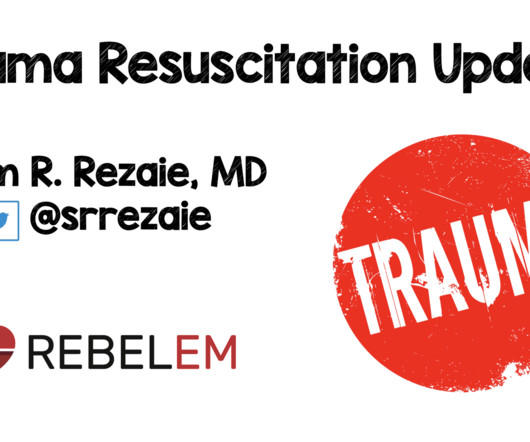Trauma Resuscitation Updates
RebelEM
MAY 25, 2023
Intensive Care Med 2020. [13] In the initial management of trauma patients there are 4 key principles that should be followed: Control bleeding Restore tissue perfusion Minimize iatrogenic injury from the resuscitation itself Promote hemostasis References: Dutton RP et al. Intensive Care Med 2020. NEJM 1994. [2] NEJM 1994. [2]













Let's personalize your content